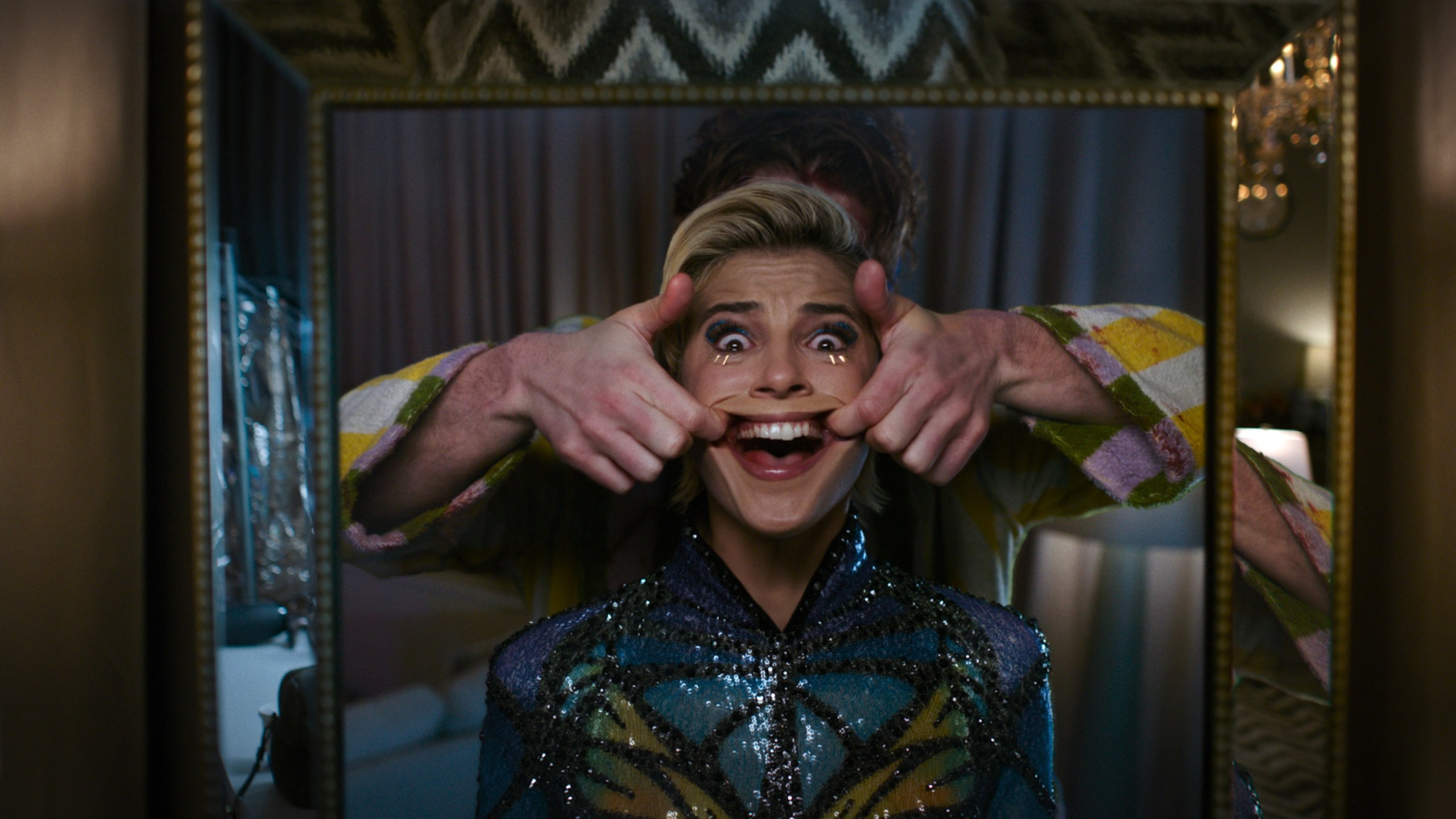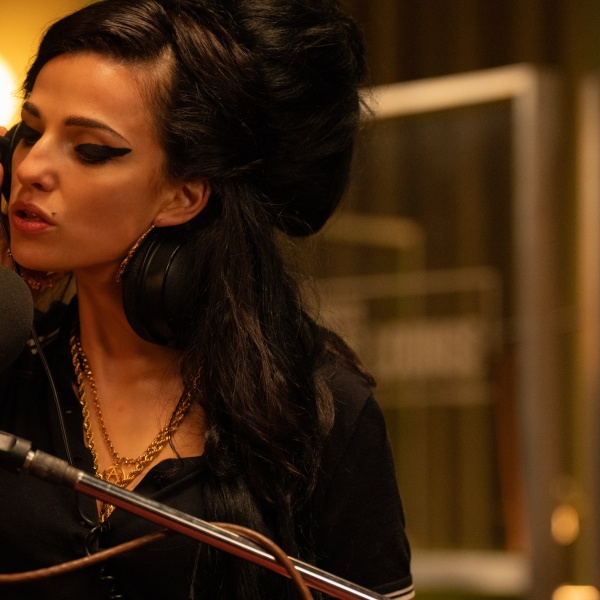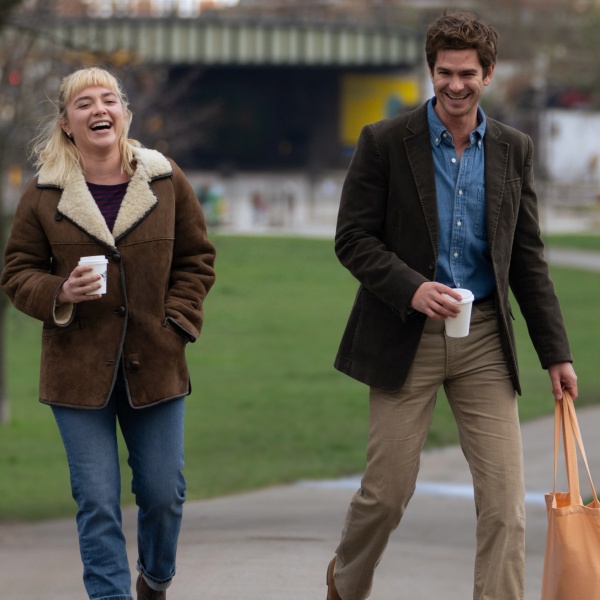Few entertainment assets are more valuable than a long-running horror franchise. Quite a few scary movies are made every year, and a decent amount of those spawn sequels. But a truly iconic character can carry a studio to horror nirvana, as the famously lucrative genre often gets exponentially more profitable once fans have invested their time in multiple films.
Manifesting a formula that stands the test of time isn’t easy. Create a character that’s too iconic and it will forever be tied to a mortal actor not easily recast (see: Robert Englund in “A Nightmare on Elm Street”). On the other hand, being too relaxed about the connective tissue between films often leaves you with a loose cinematic universe that struggles to present itself as a coherent whole (see: the “Conjuring” franchise). But after sticking the landing on a charmingly twisty sequel, “Smile 2” director Parker Finn might have handed Paramount the simplest franchise formula of all: an unkillable monster that’s little more than a facial expression almost any actor can perform.
Released in 2022, the first “Smile” notably offered a simplified version of the trendiest horror subject of the past decade: trauma. While many auteurs had produced moody, symbolism-drenched films about the idea that our own baggage was scarier than any monster, Finn delivered a commercial take on the subject that was easily marketed to mainstream audiences. The premise was simple: Every time somebody witnesses an act of evil, they become host to a cosmic parasite that distorts their perception of reality until they eventually kill themselves. Anyone who watches one of these suicides becomes the next carrier of the parasite. If you’re unsure as to whether or not you’ve caught it, you can quickly tell by looking around and seeing if anyone in your field of vision is glaring at you with a demonic smile.
While “Smile 2” begins with a brutal cold open that connects it to its predecessor, it quickly charts its own course as a standalone story that puts a new spin on the concise visual metaphor introduced in the first film. The plot focuses on Skye Riley (Naomi Scott), a troubled young pop star mounting a comeback after a public battle with substance abuse. After a year of rehab prompted by a car crash that killed a pedestrian, she’s preparing to launch an expensive tour that positions her as a poster child for sobriety and second chances. The only problem is that she still can’t stop taking opioids.
While she swore off alcohol and party drugs, Skye’s back pain from the accident prompts her to sneak out for late-night Vicodin runs after her overbearing mother/manager (Rosemarie DeWitt) says goodnight. She usually picks up her pills and goes on her way, but a strange encounter with her dealer Lewis (Lukas Gage) turns deadly when she watches him smash his own face in with a barbell plate. The starlet doesn’t know it yet, but the experience will irreparably alter the course of her life.
Now that she’s a smile carrier, Skye finds herself hallucinating at all hours of the day. The darkest moments of her life constantly replay themselves before her eyes. She participates in multi-day adventures that turn out to be five-minute daydreams. And even her closest confidantes reveal themselves as figments of her imagination at the most vulnerable possible moments. Her inability to grasp reality engulfs the final weeks of tour rehearsals in chaos, forcing her to probe the depths of her mind on a journey toward realizing that running from our formative memories is an exercise in futility.
In terms of production value, “Smile 2” is a significant improvement over its predecessor. It’s a joy to watch Finn build bigger sets and choreograph more complex shots — a privilege that’s clearly afforded to a sophomore filmmaker who earned more toys after his debut feature grossed $200 million on a $17 million budget. And Scott’s excellent take on a spiraling pop star — which feels particularly timely in a year filled with high-profile performance cancellations — would be entertaining enough on its own, even without the horror twist. A film about suicide observers who go on to commit suicide is always destined to be a bleak endeavor, but Scott and Finn’s ability to lean into the campy silliness of their premise without sacrificing character moments provides a bit of balance that was missing from the original film.
More than anything, this sequel is proof of the endless versatility that could turn “Smile” movies into an October box office fixture for decades to come. With no need for repeat actors (and an ending that ensures there will be no shortage of new characters to explore), the franchise has all the makings of an ongoing anthology tied together by the theme of our inability to escape our demons. As more people try to make peace with how their darkest hours have irreparably damaged them, actors with creepy smiles should breathe a little easier knowing that they’ll be employable for the foreseeable future.
Grade: B
A Paramount release, “Smile 2” opens in theaters on Friday, October 18.
Want to stay up to date on IndieWire’s film reviews and critical thoughts? Subscribe here to our newly launched newsletter, In Review by David Ehrlich, in which our Chief Film Critic and Head Reviews Editor rounds up the best reviews, streaming picks, and offers some new musings, all only available to subscribers.







